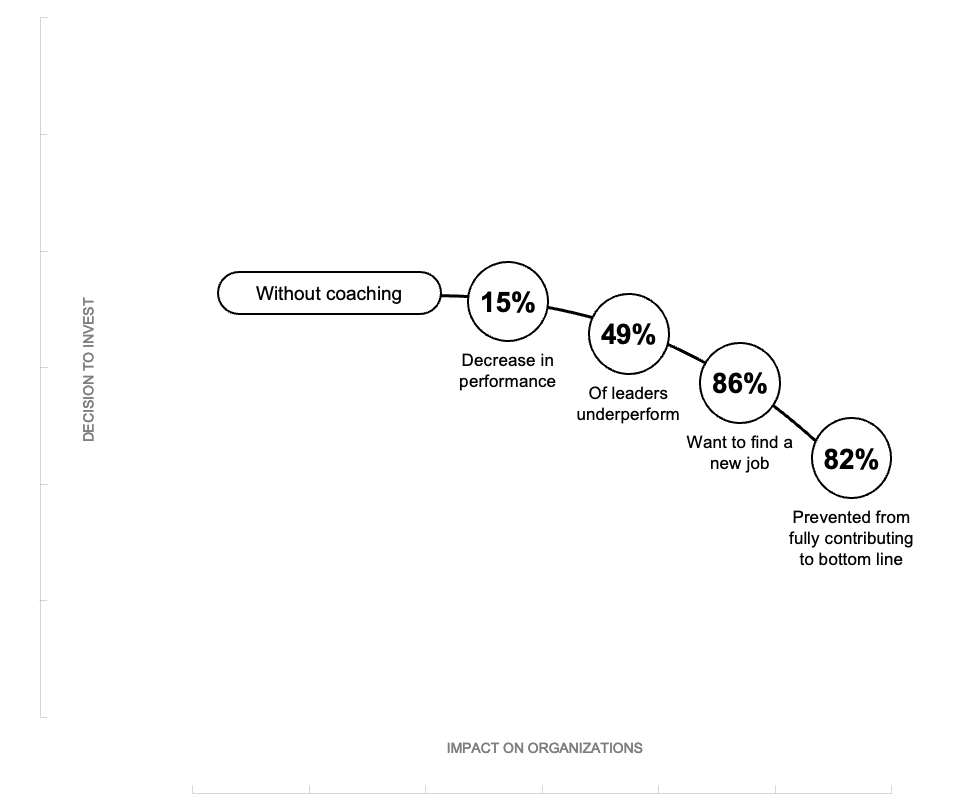Budget and resource constraints are often the biggest barriers HR and L&D professionals face when implementing important leadership development initiatives. To overcome this, you need senior leadership buy-in. And to do this, you need to make a compelling business case to C-suite executives demonstrating why the investment of time, energy and money will pay off.
At Hellomonday, and by extension Hudson, we’ve worked with thousands of exceptional HR professionals over the past 35 years and have seen this problem first-hand. When it comes to leadership development coaching, many senior leaders will have experienced the benefits themselves. However, they may be unaware that coaching is now scalable thanks to digital platforms, cost-effective, and can be rapidly implemented across an organisation – with proven results to drive retention, productivity, performance, and ultimately, improve the bottom line.
To help, here is how you can present a compelling business case and effectively measure the ROI of coaching:
Create urgency: the cost of inaction
Every conversation, every action indirect or direct has a ripple effect on an organisation’s workforce. Almost all teams face some type of leadership limitation or challenge amongst individuals with differing working styles. Often these problems are bubbling under the surface and only once the consequences are brought to everyone’s attention, it is too late.
As this occurs, it erodes morale, productivity slumps, job satisfaction plummets, high-performers leave, contributions to the bottom line significantly decrease, and culture sours.

Harness the power of storytelling
When making a case for coaching, your executives will need to see the robust industry data and proven results. However, to capture their attention and drive home the point that this is a business-critical activity, use the power of storytelling.
Here’s an example:
Say your organisation has a team with a known underperforming leader. Despite this, on the surface, the team appears to be steadily delivering results. With competing priorities across the business, it’s unanimously decided to watch the situation over the coming months, and only act if things escalate.
As the team experiences micromanagement, lack of direction and the inability to deliver feedback day-in-day-out, they begin to mask their feelings, distance themselves from work, and confide in others their lack of trust in leadership. This snowballs. Friction between people starts embedding itself in the culture, and front-line managers (almost half of whom are statistically likely to be underperforming) are forced to react to heightened emotions.
Fast-forward to two high-performers resigning for roles at competitors. This sends shock waves through an already tense team. Then another three resignations come. Turmoil ensues. Word gets around that clients and people are jumping ship. Employees that remain feel bitter, unmotivated and defeated.
With an example like this, you can highlight why delaying an investment in leadership development can lead to serious complications in an organisation.
Provide a proven solution
Once you’ve addressed the problem your organisation faces, bring forward a tangible solution. In this case, digital coaching.
The biggest asset to an organisation is its people. To maximise people’s potential they need personalised growth opportunities tailored to their individual needs. One-to-one leadership development coaching coupled with strategic workshops and on-demand learning resources will deliver this.
At Hellomonday, we need this first-hand. Over two-thirds of our participants report an increase in retention and a further 83% experience a boost in performance.
Unlike traditional leadership development programs that occur once yearly, embedded within the coaching model are successive sessions where an individual learns how to reinforce new behaviours, receive support for challenges they face from a certified coach, and have in-depth discussions on their career development with an expert.
This is coupled with on-demand learning from industry-leading resources covering topics, including but not limited to: effective communication, building high-performing teams, leading with empathy, setting clear expectations, and more.
Close strong: why coaching is cost-effective
In all likelihood, this will not be the first time your executives have seen a presentation on L&D or training initiatives. The challenge is many of those will have fallen short.
Unlike traditional L&D, one-to-one coaching is proven to be four times more effective. All while, it actually saves money, compared to traditional development initiatives.
For every dollar spent on coaching, organisations typically receive a 6x return.
Landmark industry reports, such as the Manchester Review, reveal the ROI of coaching across industries and organisations with its proven impact on an organisation’s bottom line, productivity, engagement, and retention. You can estimate the ROI for your organisation with our ROI calculator.
To help L&D and HR professionals, just like you, make a compelling business case for coaching our team has created these resources for you. Contact us to receive a full presentation with talking notes that can be easily copied and pasted into your existing PowerPoint presentations and slide decks.




